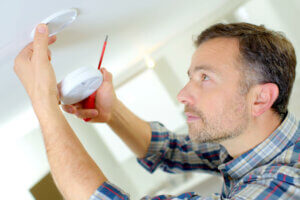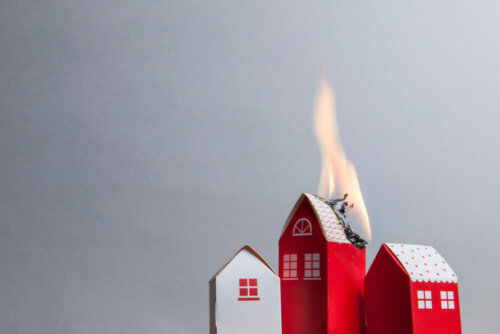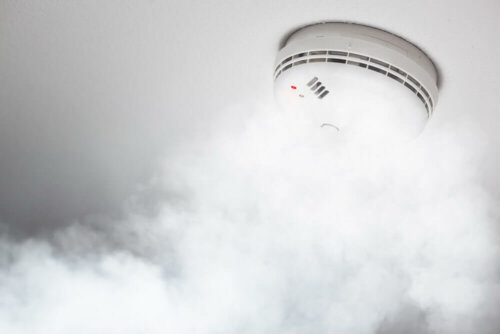Fire Safety Systems for the Home

Protecting your home is a priority. It’s important that you’re able to sleep peacefully knowing that you and your family are safe. As a result, we’ll show you some different fire safety systems for your home.
In fact, the best protection is prevention. If you try to prevent any threats or dangers in your house, you’re one step closer to having a safe home. However, it’s important to know what the risks are and what you should do to prevent any issues.
House fires happen more than you might think, although the number is relatively low. Although most people carry out prevention habits on a daily basis, we also recommend you have a fire safety system in your home. Often, when there is a fire inside a building, it’s the result of carelessness.
How to prevent house fires

One common domestic accident is short circuits in sockets and power strips. Sometimes we connect too many appliances to the same electrical supply. This can overload a power strip. Then, it can spark and cause materials close by to catch fire.
In just a few minutes, the flames can spread rapidly, burning everything in their path. Then, in a short time, it can spread to other rooms until the house is destroyed. All of this can happen from a simple plug.
As a result, you should prevent situations like this. To do this, you must turn off any power strips whenever you leave the house or if you’re not using them. We recommend not leaving appliances connected for a long time without supervision.
Another fire risk is the kitchen stove. Often, you might leave the stove on while you’re running around doing other tasks. However, this is a serious mistake. You should always monitor your stove while cooking to avoid any accidents.
It’s best to be careful and prevent accidents so that you don’t have any regrets in the future.
Features of fire safety systems

Given the possibility of fires, you should make sure your house has an effective system that prevents any risks. For example, one option is to install water sprinklers that will automatically switch on in the event of an internal fire. Let’s look at some characteristics of this system:
- These are hidden and not visible. As a result, you don’t ruin the aesthetics of your rooms. You can also still decorate the ceiling as you wish.
- How is water dispersed in the case of a fire? There are circular devices located on the ceiling that spray water and douse the fire.
- This technology of this system is very high-tech. There are heat sensors that sense flames in any room. Then, a message is sent to the system so that the water comes on, covering all corners of the area. This is a very clever system.
- Many public places use this system, such as hotels, restaurants, and offices. Why not use it at home?
Fire safety systems – smoke detectors

Where there’s smoke, there’s fire. Smoke usually rises to the ceiling. As a result, you should put smoke detectors on the ceiling so that you’re instantly warned of a fire.
These detectors are usually circular and have indentations that let smoke in. Then, an alarm sounds and you’re warned of the fire.
Some detectors don’t have any connection to any other fire safety system. However, some smoke detectors send a message to firefighters or another system, such as the sprinklers.
A complete fire safety system is much better for protecting your house.
Other things to consider
As we’ve mentioned, it’s important to have fire safety systems in your home. It’s essential to protect all your rooms against fire. However, we should point out that there are other things that can help you in a fire.
A fire extinguisher is a functional item that every home should have. It’s definitely worth having one on hand. We also recommend that you have a hammer and an ax in case you have to open a door or break glass in an emergency. These items can also be part of your home fire safety system.
All cited sources were thoroughly reviewed by our team to ensure their quality, reliability, currency, and validity. The bibliography of this article was considered reliable and of academic or scientific accuracy.
- Lindo Wallace, María Luisa: Técnicas del hogar, San José, Universidad Estatal a Distancia, 1996.








